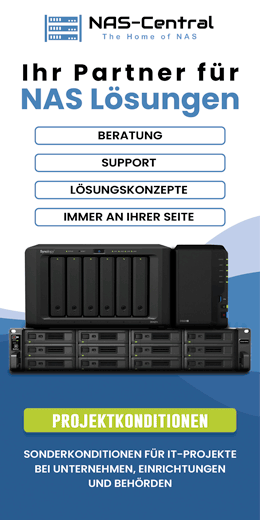Weil meine DS1512+ auch das Bootproblem hatte, habe ich Synology angeschrieben. Die Rückmeldung wie folgt:
Thank you for contacting Synology support and please allow us reply in English as multilingual support is limited at this time.
From your description, seems this issue you are facing now is related with hard disk that cause the NAS is unable to boot up.
At this moment, if you were using RAID1/5/6 or SHR/SHR-2 or Basic volumes, you can install DSM on a spare empty disk and then insert the remaining hard disks to read the data. (Please be advised that this is still risky. If one more hard disk fails during this procedure, then your data may be lost). Here are the steps:
1) Power off and remove all hard disks
2) Insert a spare empty hard disk in Slot 1
3) Power on and install DSM normally
4) Do not create any volumes. Power off DiskStation once DSM is installed successfully.
5) Insert the remaining old hard disks while keeping new spare disk in slot 1. (1 of your old hard disks may be left out.)
6) Power on DiskStation
Once the data in the old disks can be read, you should back them up to another place asap. Or, you can go to Storage Manager and repair the system partition on the old hard disks. When it's done, you can remove the spare disk, install the original disk, and repair the system partition on the original disk. By doing this, your previous system configurations (user account, user privilege, application settings, etc.) will be erased, but the data in the shared folders will still be there.
The following reply are translated by Google Translation, please kindly let us know if the message is not understandable:
Aus Ihrer Beschreibung, scheint dieses Problem, das Sie jetzt sind mit Festplatte, die dazu führen, dass das NAS ist nicht booten kann.
Wenn Sie RAID1 / 5/6 oder SHR / SHR-2 oder Basis-Volumes verwenden, können Sie DSM auf einem freien leeren Datenträger installieren und dann die restlichen Festplatten einlegen, um die Daten zu lesen. (Bitte beachten Sie, dass dies immer noch riskant ist. Wenn eine weitere Festplatte während dieses Vorgangs fehlschlägt, gehen Ihre Daten möglicherweise verloren). Hier sind die Schritte:
1) Schalten Sie alle Festplatten aus und entfernen Sie sie
2) Legen Sie eine freie leere Festplatte in Slot 1 ein
3) Anschalten und DSM normal installieren
4) Erstellen Sie keine Volumes. Schalten Sie die DiskStation aus, sobald DSM erfolgreich installiert wurde.
5) Legen Sie die verbleibenden alten Festplatten ein, während Sie neue Ersatzdatenträger in Steckplatz 1 aufbewahren. (1 Ihrer alten Festplatten kann weggelassen werden).
6) Einschalten der DiskStation
Sobald die Daten in den alten Festplatten gelesen werden können, sollten Sie sie an einem anderen Ort asap sichern. Oder Sie können zu Storage Manager gehen und die Systempartition auf den alten Festplatten reparieren. Wenn es fertig ist, können Sie die Ersatzplatte entfernen, die ursprüngliche Festplatte installieren und die Systempartition auf der ursprünglichen Festplatte reparieren. Auf diese Weise werden Ihre bisherigen Systemkonfigurationen (Benutzerkonto, Benutzerberechtigung, Anwendungseinstellungen usw.) gelöscht, aber die Daten in den freigegebenen Ordnern bleiben weiterhin vorhanden.








